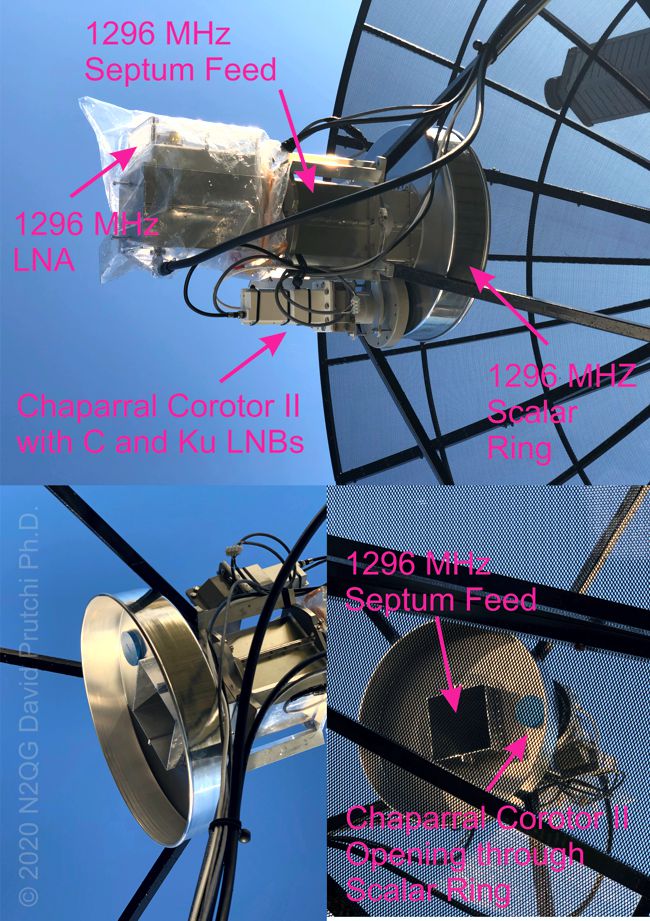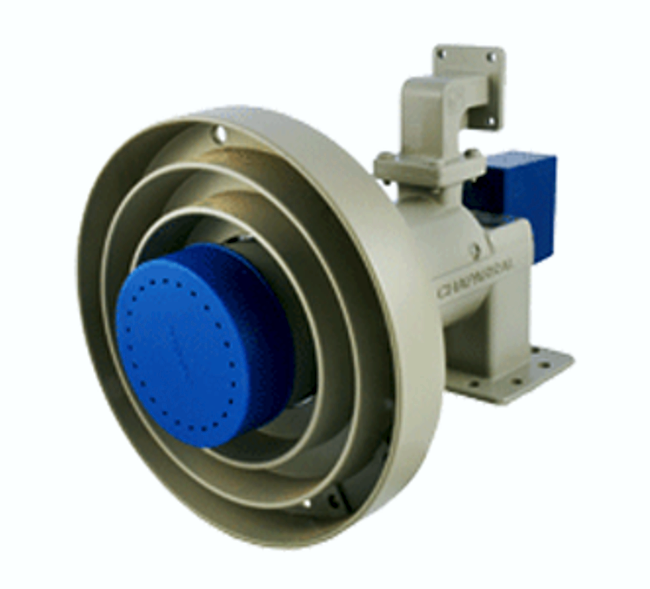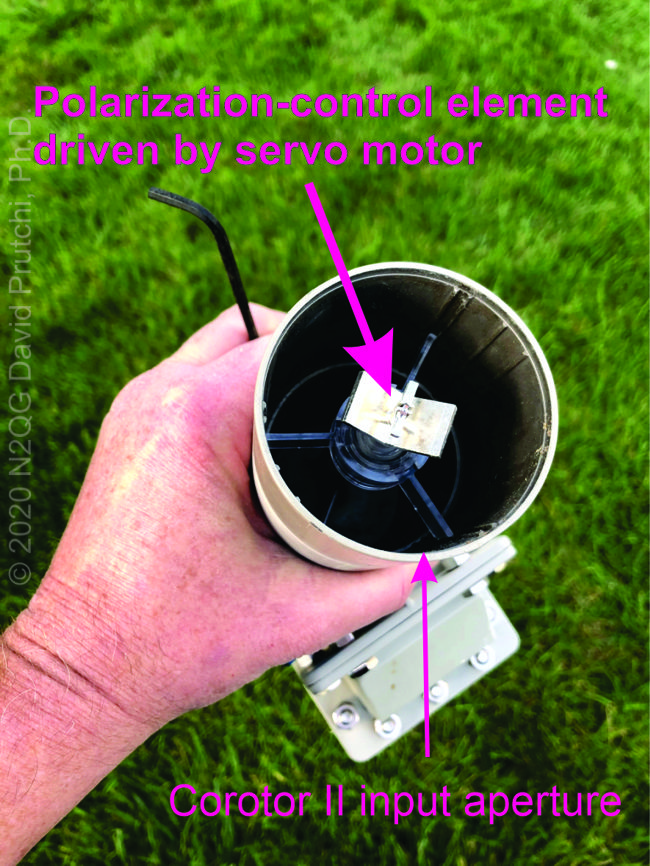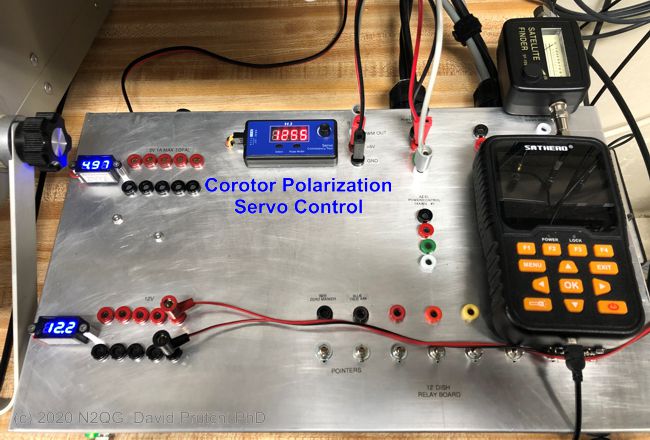
My dish’s Az/El are controlled using a Green Heron RT-21azel that Jeff kindly modified to accept input directly from the US Digital T7 RS232 absolute inclinometer on the dish’s mount. As such, I always have certainty about the dish’s elevation. However, I don’t have any absolute reference for azimuth, so my preference is to rely on the location of geostationary satellites for calibration.
To do so, I have a Chaparral Corotor II with C/Ku LNBs mounted 7 degrees to the side of the main feed. An issue occurred however when I had to mount a 18″ diameter scalar ring on the 1296 MHz septum feed to improve illumination of the dish, thus blocking the Chaparral’s aperture. Cutting a hole on the scalar ring solved the problem. This did not reduce the efficiency of the scalar ring (I still have 11dB of Sun noise over cold sky on the 3.5m dish). Jason (KC2TDS) will cut a second hole on the other side of the feed for the DSN X-band feedhorn that he built.
Of course, this arrangement invalidates the Chaparral’s scalar ring, but the signals from the satellites are strong enough on both C and Ku to be received at my QTH without the need for optimizing the feed pattern.

Now, to be able to receive linearly-polarized satellites along the full geosynchronous arc (the Clarke Belt), the skew angle needs to be adjustable. This is why I use a Corotor – because the polarization angle can be finely controlled through a servo motor on the Corotor II (the blue box in the back part of the feed) that rotates the polarization-selection element inside the Corotor’s feed.

The servo in the Corotor II works just like a regular hobby servo, which allows me to control it from the shack using a simple PWM servo tester.

My experience using the BIG-RAS rotator has been excellent since I got the Green Heron Controller (instead of the SPID Controller). I set it to ignore pulses when it’s not being commanded to move, and haven’t needed any resetting whatsoever after high winds. I have a few of the geosynchronous satellites as presets on PSTRotor, and always end up spot-on when checking positioning accuracy.
